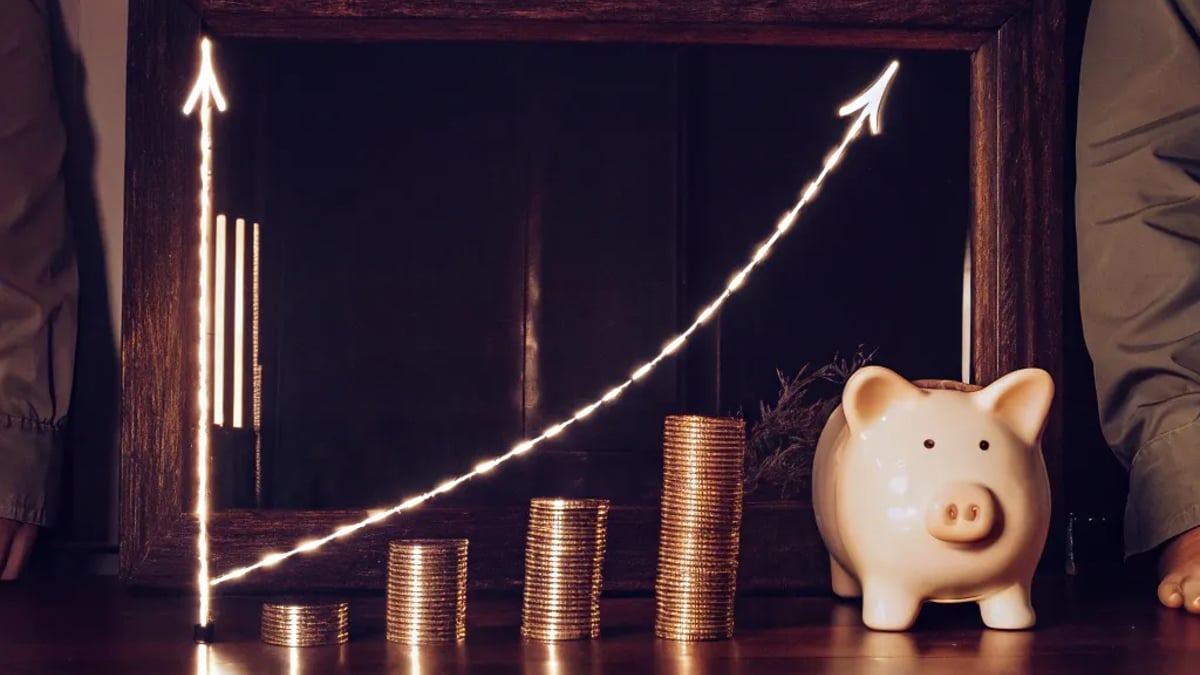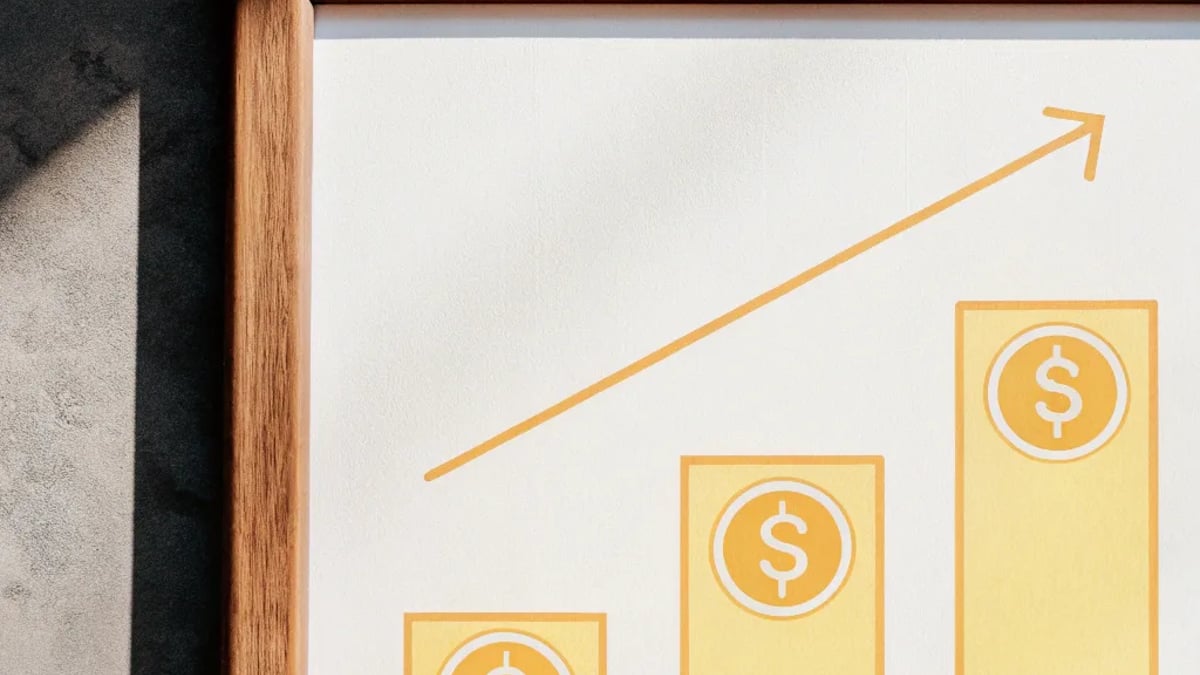
The concept of compound interest often gets described as "magic" in financial circles, but there's nothing supernatural about it—just the remarkable power of mathematics working in your favor. If you're new to investing or saving, understanding compound interest could literally be worth thousands of dollars to your future self.
What Is Compound Interest, Exactly?
Compound interest is when you earn interest not just on your initial investment (the principal), but also on the interest you've already accumulated. It's essentially interest earning interest on itself—creating a snowball effect that accelerates your money's growth over time.
Unlike simple interest, which only calculates interest on the original principal, compound interest creates exponential rather than linear growth. This seemingly small difference becomes dramatic over longer time periods.
"Compound interest is the eighth wonder of the world. He who understands it, earns it; he who doesn't, pays it," goes a quote often attributed to Albert Einstein. Whether he actually said it remains debatable, but the sentiment holds true.

The Basic Formula
The compound interest formula might look intimidating at first, but it's straightforward:
A = P(1 + r/n)^(nt)
Where:
- A = Final amount
- P = Principal (initial investment)
- r = Annual interest rate (in decimal form)
- n = Number of times interest compounds per year
- t = Time (in years)
Don't worry if math isn't your strong suit. Numerous online calculators can do the heavy lifting for you, like the Compound Interest Calculator on Investor.gov.
The Massive Difference Between Simple and Compound Interest

Let's compare with a quick example:
Imagine investing $10,000 at 5% annual interest for 30 years.
With simple interest, you'd earn: $10,000 × 0.05 × 30 = $15,000 in interest Total after 30 years: $25,000
With compound interest (compounded annually): $10,000 × (1 + 0.05)^30 ≈ $43,219 That's more than $18,000 extra just from the compounding effect!
This difference becomes even more dramatic with higher interest rates or longer time periods.
The Rule of 72: A Handy Shortcut
Want to know how quickly your money might double? The Rule of 72 offers a quick mental calculation:
72 ÷ Interest Rate = Years to Double
For example, at 6% interest, your money would approximately double in 12 years (72 ÷ 6 = 12).
This isn't precise to the decimal point, but it's remarkably accurate for quick estimates and helps visualize the power of different interest rates.
How Compounding Frequency Affects Growth
Interest can compound at different intervals—daily, monthly, quarterly, or annually. The more frequently compounding occurs, the more your money grows.
For instance, $10,000 invested at 5% for 10 years would grow to:
- $16,289 with annual compounding
- $16,386 with monthly compounding
- $16,453 with daily compounding
The differences might seem small initially, but they grow more significant with larger sums and longer timeframes.
The Critical Factor: Time
If there's one thing to remember about compound interest, it's that time is your greatest ally. Starting early—even with smaller amounts—often outperforms starting later with larger sums.
Consider two investors:
- Alex invests $5,000 annually from age 25 to 35 (10 years total, $50,000 invested), then stops but leaves the money to grow until age 65.
- Blake waits until 35 to start, then invests $5,000 annually for 30 years until age 65 (30 years total, $150,000 invested).
Assuming an 8% average annual return, who ends up with more at age 65?
- Alex: approximately $787,000 (from $50,000 invested)
- Blake: approximately $611,000 (from $150,000 invested)
Despite investing only a third as much money, Alex comes out ahead because those early investments had more time to compound. This demonstrates what financial advisors call "the cost of waiting."
:max_bytes(150000):strip_icc():format(webp)/compound-interest-vs-simple-revisedv1-c71f84ae05d44d9aa2daa91712ff8841.png) Image source: Investopedia
Image source: Investopedia
Where Can You Earn Compound Interest?
Several financial vehicles offer compound interest:
- Savings accounts: Though rates are typically low (often below 1%), they're virtually risk-free and FDIC-insured.
- Certificates of Deposit (CDs): These generally offer slightly higher rates than savings accounts in exchange for locking up your money for a set period.
- Money market accounts: Often providing better rates than regular savings accounts with some additional features.
- Bonds: Fixed-income securities that may compound interest depending on the type.
- Dividend-paying stocks: When dividends are reinvested to purchase additional shares, you create a compounding effect.
- Retirement accounts: 401(k)s and IRAs allow your investments to grow through compounding without annual taxation (until withdrawal for traditional accounts).
The higher the interest rate or return, the more dramatic the compounding effect—but higher returns typically come with increased risk.
How Do I Start Benefiting from Compound Interest?
Getting started is simpler than you might think:
- Start as early as possible: Even small amounts benefit from longer compounding periods.
- Contribute regularly: Set up automatic transfers to your investment or savings accounts.
- Reinvest earnings: Don't withdraw interest, dividends, or gains—let them compound.
- Increase contributions when possible: Raise your investment amounts as your income grows.
- Be patient: Compound interest works its magic over time—the early years may seem slow, but the growth curve accelerates dramatically in later years.
According to Vanguard, one of the world's largest investment companies, "But remember, the more money you invest, the greater the effects of compounding and your return potential." This highlights that while starting early is crucial, continuing to add to your investments amplifies the compounding effect.
Common Questions About Compound Interest
Does Compound Interest Only Apply to Savings?
No! While we often discuss compound interest in terms of savings and investments, it works in reverse too. Credit card debt, for instance, compounds against you—which is why high-interest debt can spiral out of control if only minimum payments are made.
The average credit card interest rate hovers around 20% or higher. At that rate, unpaid balances can double in less than four years through negative compounding.
How Does Inflation Affect Compound Interest?
Inflation erodes purchasing power over time. If you're earning 3% on savings while inflation runs at 2%, your real return (after inflation) is only 1%. This is why many financial advisors recommend growth investments like stocks for long-term goals—they historically have provided returns that outpace inflation.
Can I Calculate Compound Interest Without Formulas?
Absolutely! Numerous online calculators and apps make it easy to see how your money might grow. Your bank or investment platform likely offers projection tools as well. These tools let you play with different variables to see how changes in contribution amounts, interest rates, or time horizons affect your results.
The Bottom Line
Compound interest transforms modest savings into significant wealth over time. It rewards patience and consistency, making it one of the most powerful concepts in personal finance. Whether you're saving for retirement, a home, education, or any long-term goal, understanding and harnessing compound interest puts financial success within reach.
The key ingredients are simple: start early, be consistent, reinvest your returns, and give your money time to work for you. As your interest earns interest, you'll be building wealth even while you sleep.
Disclaimer: This article is for informational purposes only and should not be considered financial advice. Always consult with a qualified financial professional before making significant financial decisions.
Tags

About Liam Davenport the Author
Liam Davenport is a seasoned tax consultant with over 15 years of experience navigating complex tax codes and optimizing strategies for both individuals and corporations. His expertise lies in deciphering ever-changing tax regulations and crafting personalized tax solutions for his clientele.
Recommended Articles
Why Parenting Daughters May Be More Stressful
Discover why parenting daughters may be more stressful, including insights on societal expectations and coping strategies for parents.
Can This Common Spice Really Support Cancer Prevention?
Explore how common spices like turmeric and garlic may support cancer prevention through their antioxidant and anti-inflammatory properties.
Understanding Hypoparathyroidism: Symptoms and Care
Explore hypoparathyroidism, its symptoms, causes, and effective treatment options for proper management of this rare endocrine disorder.
Finding Affordable Legal Help for Divorce Cases
Discover how to find affordable legal help for divorce cases through legal aid, pro bono services, and community clinics.
Pilot Training Scholarships in Dubai: 2026 Overview
Explore pilot training scholarships in Dubai for 2026, making aviation careers more accessible through financial aid and diverse opportunities.




